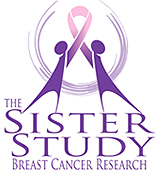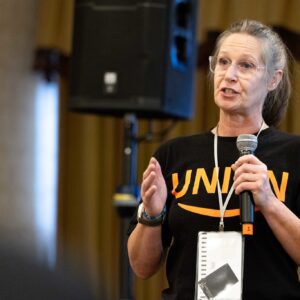December 26, 2025
‘Sister Study’ Update
(This article appeared in the September/October 2007 issue of The American Postal Worker magazine.)
Joyce B. Robinson, Research & Education Department Director
The nation’s largest ongoing research project on the causes of breast cancer is still searching for sisters.
Known as “The Sister Study,” the National Institute of Environmental Health Sciences (NIEHS) project needs 11,000 more women to volunteer a little time to help it reach its goal of 50,000 enrollees with sisters who had breast cancer. Nearly three years old, the Sister Study must meet its enrollment goal by the end of 2007.

Early detection is always the best defense against the disease, and is often the only defense. Through early detection, many cancers can be held at bay and even avoided, which is especially important with deadly cancers such as breast cancer. While lung cancer claims far more lives, 90 percent of lung cancer cases are traceable to smoking, and therefore are preventable.
Breast cancer can be treated and its impact diminished, but until we learn more about its causes, it can’t really be “prevented.” All we know is that the causes of breast cancer are varied: That’s why research is so important.
The disease can strike at any age, but most typically is seen in women over 40.While women in their 20s and 30s are advised to have a clinical breast exam every three years, older women should see a specialist every year. And women considered at risk because of a family history or a known genetic tendency should look into being screened at an earlier age.
Siblings share not only genes, but early experiences and environmental settings, said Dale Sandler, chief of the Epidemiology Branch at NIEHS. Essentially, researchers are seeking more families in order to better pinpoint the possible connections. Sandler is hoping that women who are not eligible will pass the word along to at least one woman they know who is eligible to participate.
“Research shows that sisters of women with breast cancer have about twice the risk of developing breast cancer as other women,” she said. “Studying a large number of sisters is a great way to learn why some women get breast cancer and others don’t.”
Conducted in English or Spanish, the Sister Study requires very little time from its volunteers. The 10-year observational study begins with participants answering questions about diet, jobs, hobbies, and things they’ve been exposed to throughout their lives to determine what may influence breast cancer risk. Later, at a time and location convenient for the participant, a female health technician collects small samples of blood, urine, toenail clippings, and house dust, which will help give researchers a better picture of the woman’s genes and environment.
Women in the U.S. and Puerto Rico, ages 35 to 74, may be eligible to join the Sister Study if their sisters (living or deceased) have had breast cancer. Women who join the Sister Study must never have been diagnosed with breast cancer themselves.
Sandlers said that although the study is seeking women from all backgrounds, researchers are especially interested in enrolling African Americans, Latinas, Native Americans, Asians, and Pacific Islanders. “If you’re a woman of color whose sister had breast cancer, your participation in the Sister Study is especially important,” she said, adding that they also seek blue-collar workers and anyone over 55.
All personal data collected for the Sister Study is kept safe, private, and confidential. No woman is asked to take any medicine, pay any visits to medical practitioners, or to make any changes to diet or lifestyle.
To volunteer or learn more about the Sister Study, visit the web site www.sisterstudy.org. A toll-free number, 877-4SISTER (877-474-7837) is also available. The associated TTY number is 866-889-4747.
Please do what you can to help the researchers in their fight against breast cancer so that each successive generation of “sisters” will have a decreased likelihood of contracting the disease.



